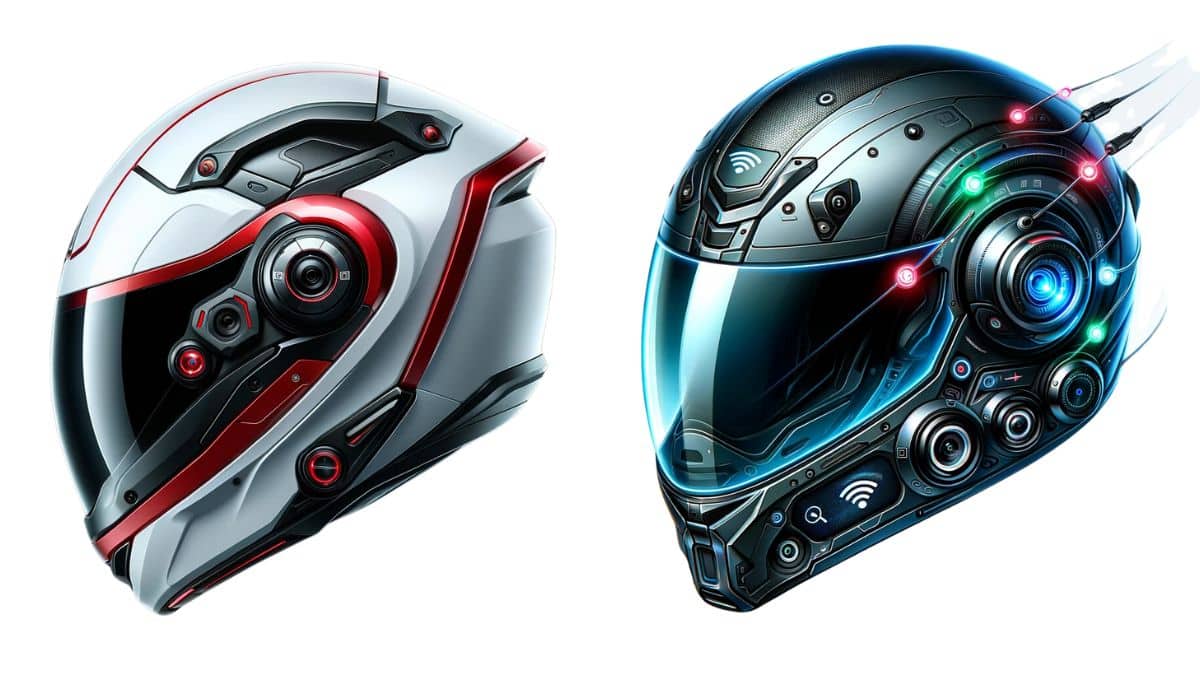In recent years, motorcycle technology has evolved far beyond engine performance and design. One of the most exciting innovations in rider safety is the emergence of smart helmets—protective gear equipped with advanced electronics designed to enhance awareness, communication, and protection.
These helmets are transforming how riders experience the road. With features such as built-in cameras, Bluetooth connectivity, GPS navigation, and even crash detection, smart helmets are bringing intelligence to safety gear, making riding safer and more enjoyable than ever before.
The Evolution of Helmet Technology
Traditional helmets have always focused on one purpose—protection. However, as technology has advanced, so have the expectations of modern riders. The need for greater safety, convenience, and connectivity has driven the development of helmets that do more than just protect.
Smart helmets integrate sensors, communication modules, and digital displays, turning them into multifunctional riding companions. They combine comfort, style, and intelligence, offering riders tools to stay connected while remaining focused on the road ahead.
Key Features of Modern Smart Helmets
Smart helmets come equipped with a range of innovative features that set them apart from conventional models. Some include built-in Bluetooth communication systems for hands-free calling, integrated speakers, and microphones that let riders communicate with passengers or other bikers.
Many models now include heads-up displays (HUDs) that project essential information like speed, GPS directions, and traffic alerts directly onto the visor. Others feature rearview cameras and blind-spot detection systems, providing riders with 360-degree awareness for safer navigation.
Safety First: How Smart Helmets Protect Riders
Safety remains the primary purpose of any helmet, and smart technology enhances it further. Sensors embedded within these helmets can detect sudden impacts or falls, automatically alerting emergency contacts with GPS coordinates. This quick response capability can be life-saving in serious accidents.
In addition, built-in cameras allow continuous video recording, which can serve as crucial evidence in case of accidents. Some helmets also feature voice-controlled functions, minimizing distractions and allowing riders to operate essential tools without removing their hands from the handlebars.
Connectivity and Communication on the Go
Connectivity has become an essential part of modern life, and motorcyclists are no exception. Smart helmets are bridging the gap between convenience and safety by integrating Bluetooth and Wi-Fi connectivity, enabling seamless pairing with smartphones, GPS systems, and even other smart helmets.
This feature allows riders to listen to music, take calls, or receive navigation updates—all while keeping their focus on the road. Group riding also becomes easier, as intercom systems let riders communicate clearly without shouting or hand signals.
Integration with Augmented Reality and AI
The next generation of smart helmets is taking innovation even further with augmented reality (AR) and artificial intelligence (AI). AR overlays real-time data—like navigation routes, traffic alerts, or speed limits—onto the visor, providing valuable information without distracting the rider.
AI technology enhances safety by learning riding patterns, analyzing surroundings, and even predicting potential hazards. Some AI-powered helmets can warn riders of sharp turns, approaching vehicles, or changing weather conditions, significantly reducing accident risks.
Comfort, Design, and Battery Life
Manufacturers are paying special attention to the comfort and aesthetics of smart helmets. Lightweight materials, improved ventilation, and ergonomic designs ensure riders don’t compromise comfort for technology.
Battery life has also improved, with most smart helmets offering between 8 to 12 hours of continuous use. Many models support fast charging via USB-C and feature energy-efficient systems that balance power consumption with performance.
Challenges Facing Smart Helmet Adoption
Despite their promise, smart helmets face several challenges before becoming mainstream. High costs remain one of the biggest barriers, as advanced models can be significantly more expensive than traditional helmets.
Battery maintenance and potential software glitches can also discourage some riders. Moreover, not all regions have regulations that accommodate tech-integrated helmets, leading to uncertainty about their legal use in certain areas. As technology matures, affordability and standardization will play a vital role in wider adoption.
The Environmental Impact and Sustainability
Many modern helmet manufacturers are embracing sustainability by using eco-friendly materials in smart helmet production. Recycled plastics, biodegradable liners, and energy-efficient manufacturing processes are becoming more common.
Additionally, long-lasting battery technology and modular components reduce waste and extend helmet lifespans. As the motorcycle industry moves toward greener practices, smart helmets are becoming part of the broader sustainability conversation.
How to Choose the Right Smart Helmet
When selecting a smart helmet, riders should consider several key factors. Safety certification should always come first—look for models that meet DOT, ECE, or Snell standards. After that, evaluate connectivity features, comfort, battery life, and compatibility with your existing devices.
It’s also important to consider software support and updates. Some manufacturers provide regular firmware upgrades that enhance features and security, ensuring the helmet remains up-to-date and reliable over time.
What Are the Benefits of Using a Smart Helmet
Smart helmets provide numerous benefits beyond traditional protection. Riders can navigate hands-free, stay connected, and even record scenic rides. The combination of convenience and safety makes them an ideal choice for both daily commuters and adventure enthusiasts.
Moreover, they reduce the need for external gadgets like cameras or Bluetooth headsets since all these technologies are built into one unified system.
Are Smart Helmets Legal Everywhere
While smart helmets are legal in most countries, certain regions have restrictions regarding built-in displays or camera usage. Riders should always check local traffic regulations before using one to avoid penalties.
Regulatory bodies are gradually adapting to this emerging technology, and it’s expected that clearer guidelines will soon standardize smart helmet usage globally.
Do Smart Helmets Require Regular Maintenance
Yes, just like any tech device, smart helmets require occasional maintenance. Keeping the firmware updated, cleaning camera lenses, and ensuring that sensors and microphones remain unobstructed are key steps in preserving functionality.
Battery health should also be monitored. Avoid overcharging or exposing the helmet to extreme temperatures, as this can reduce battery lifespan over time.
Can Smart Helmets Save Lives
Absolutely. The integration of crash detection systems and automated emergency alerts can significantly improve accident response times. When combined with 360-degree visibility and AR-assisted navigation, smart helmets greatly reduce the chances of severe injury or delayed rescue.
These technologies collectively create a safer riding environment, allowing motorcyclists to focus more on the road and less on potential hazards.
Conclusion
Smart helmets represent the next step in the evolution of motorcycle safety gear. By combining cutting-edge technology with advanced protection, they provide riders with a level of awareness and connectivity never seen before. These innovations not only make rides safer but also transform how motorcyclists interact with their environment.
As technology continues to evolve, smart helmets will become more affordable, efficient, and intelligent. They symbolize the future of safe riding—where every journey is protected, connected, and enhanced by innovation.








